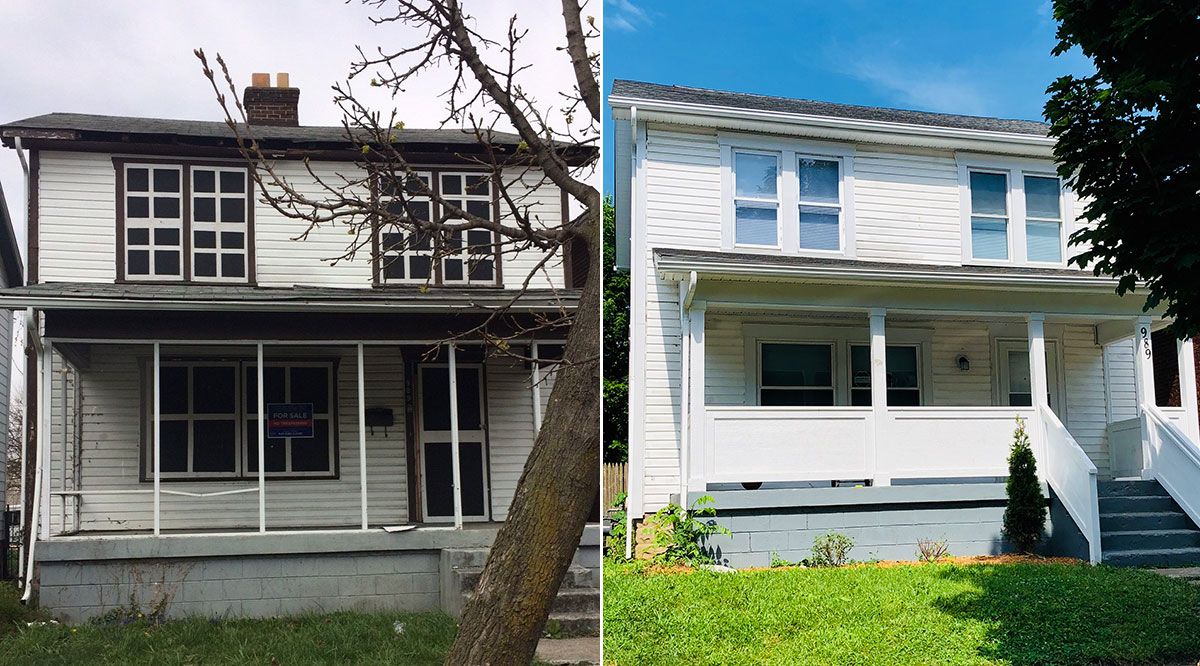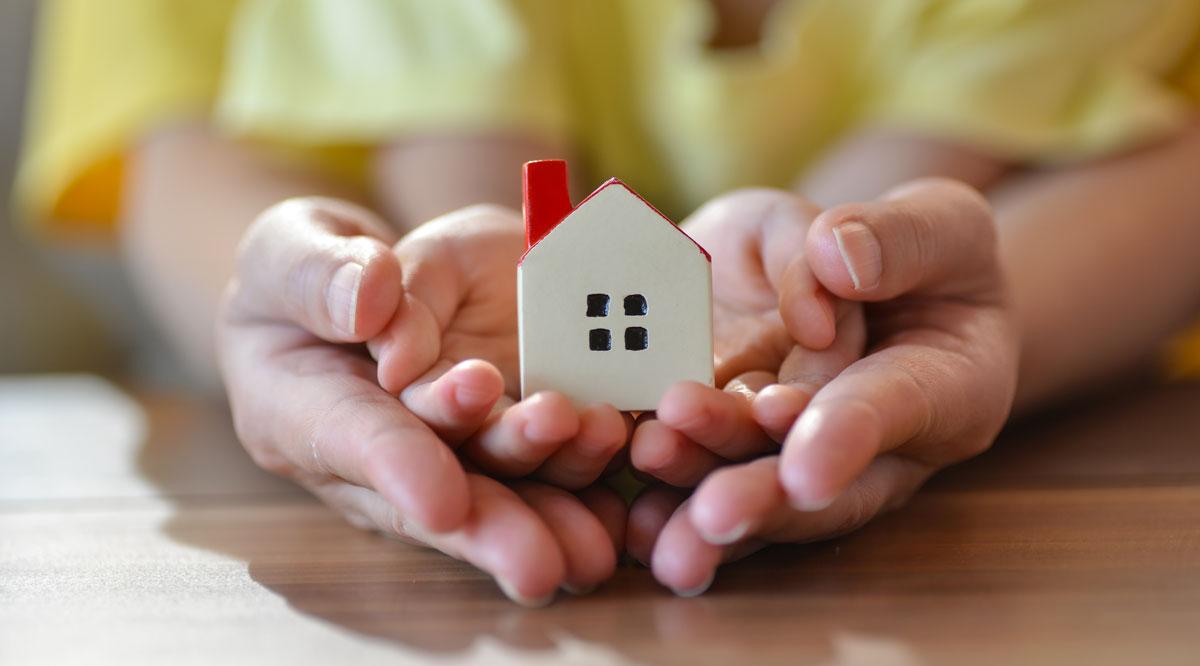Staff in the emergency department at UI Health, the hospital of the University of Illinois at Chicago (UIC), had gotten used to seeing James (not his real name) often. The young immigrant spoke little English and had no home. And while he sometimes needed care for AIDS, staff also occasionally let him stay for “secondary gain,” the medical buzzword for needing something to eat and a warm, safe place to sleep.
Initial attempts at finding James housing failed, until staff connected him with treatment in UIC's infectious-disease department. Outreach workers there helped him get to appointments, and uncovered one of James's key problems: “What we thought had been a language barrier — he spoke a rare dialect — turned out to be AIDS-related dementia,” says Stephen Brown, MSW, director of UIC’s Better Health Through Housing program. After additional treatment and occupational therapy, UIC found him housing. With new skills, a stable home, and more support, James’ health has improved dramatically, and his viral load is now undetectable. The real horror in this story? “He had been on the street for ten years,” says Brown.
UI Health and others in academic medicine are tackling the thorny issues of homelessness head on. They are approaching the problem as a disease they can help cure by working with local partners, not a problem simply to punt to others. Some are focused on helping people find housing while others are working to build homes, rehabilitate properties, or provide rent subsidies.
Such efforts stem not just from conscience, but from data. Experts say homelessness reduces life expectancy by as much 30 years. And UIC evaluations found a 34% mortality rate within two years of becoming homeless, says Brown. “It’s as deadly as something like pancreatic cancer.”
“[H]ealth care will always be second to survival. We can’t expect people to spend money on transportation for a medical appointment, for example, when they don’t have a place to sleep that night.”
Thea James, MD, Boston Medical Center
“There’s a crisis in affordable housing,” notes Clarence J. Fluker, MA, AAMC director of community engagement. “Besides those who are experiencing chronic homelessness, many more are experiencing housing insecurity. And that’s motivating more institutions, especially those who see themselves as anchors in the community,” he adds. “The more we learn about the social determinants of health, the more we recognize that medical care alone isn’t enough.” In fact, chronic homelessness is almost always complicated not just by poverty, but by problems such as chronic illness, cognitive impairment, mental illness, and substance abuse.
While humbling, awareness of the challenges of homelessness is a powerful catalyst. In 2017, for example, Boston Medical Center (BMC) committed to spending $6.5 million over five years to ameliorate homelessness issues. The effort includes $3 million for a housing stabilization partnership with two other hospitals that helps community organizations fund families battling eviction. “[As doctors] we focus on disease, telling people to eat right and take their medicine,” says Thea James, MD, vice president of mission and associate chief medical officer at BMC. “But health care will always be second to survival. We can’t expect people to spend money on transportation for a medical appointment, for example, when they don’t have a place to sleep that night.”
Saving lives
Because the root causes of homelessness are so diverse, there’s no silver bullet. For one, there are the revolving-door problems of mental illness and addiction. People dealing with chronic homelessness have higher rates of such conditions as traumatic brain injury, asthma, certain cancers, HIV/AIDS, and hepatitis.
Racial inequities, including centuries of discrimination in housing, criminal justice, and education, are also a factor. While African Americans make up 13% of the general population and 21% of those living in poverty in the United States, for example, they represent 40% of people who are homeless.
The impact of homelessness and housing insecurity is especially brutal on children. That’s why Nationwide Children’s Hospital in Columbus, Ohio, which serves as an accountable care organization for 300,000 children on Medicaid, has thrown itself so intensely into finding solutions.

Working with community groups, Nationwide has spent $30 million to build or rehabilitate more than 350 homes. In 2018, it created the South Side Renaissance Fund, which will provide up to 170 units of rental housing for families with incomes between 60% and 80% of area median income.
The hospital also supports a 58-unit building for low-income people with a special focus on providing on-site job-related services. (The results of the first phase of these initiatives are detailed in Pediatrics.)
One Nationwide focus has been infant mortality, which is sky-high in the city, especially among black children. “Homelessness is so stressful, and that’s associated with early birth, so fewer of those children live to be a year,” says Rev. John Edgar, head of Community Development for All People, one of Nationwide’s partners.
The organization’s pilot program secured rent-free housing for ten women who were homeless and in their second trimester, guaranteeing they could stay through their baby’s first year. “All ten babies were born full-term, normal weight, and healthy, and all have made it to their first birthday,” Edgar says.
Children who are experiencing homelessness are also at high risk for suicide and self-harm. In a recent American Academy of Pediatrics study, 29% of youth who were homeless reported having injured themselves, 21% had experienced suicidal ideation, and 9% had attempted suicide. That’s twice the rate of their peers who have secure housing.
BMC is keenly aware of the problems associated with homelessness. It therefore offers housing services right in its pediatric clinics, helping connect patients with funding and services to find housing if they don’t have it, or to stabilize their housing if they are at risk.
“While addressing housing isn’t medical work,” says Megan T. Sandel, MD, a BMC pediatrician who has studied housing insecurity for decades, “it’s an innovation we need to be part of, just as much as a new technology or a new type of pill.”
Saving money
Although better health outcomes are their primary motivation, these institutions are clear that saving money matters, too. In the United States, 5% of hospital users account for about half of health care costs, according to the Agency for Healthcare Research and Quality. Many are housing insecure.
Advocates say quantifying savings is essential, helping win buy-in from health care executives who may be nervous about jumping into the real estate business.
UIC is doing this by focusing on emergency department “super-utilizers,” those who have been in the emergency department at least eight times in one year. (One patient visited 144 times in one year, says Brown.) It is spending $250,000 to help provide homes to 25 emergency department patients who have no stable housing. Because a trip to the ED can cost $3,000 per day, the $1,000 monthly rent subsidy for each patient looks like a bargain.
In fact, UIC’s initial research found that average monthly costs per client dropped to $4,785 from $5,879, a reduction of about 18%, says Brown. “The solution is cheaper than the problem,” he notes.
Other research backs this up. A recent study from the Center for Outcomes Research and Education reports that providing affordable housing reduces overall health care expenditures by 12% for Medicaid recipients, driven in part by an 18% decrease in pricey ER visits.
Working with communities
Providing patient housing requires that institutions step beyond the role of health expert, and that can be uncomfortable, says Tim Robinson, CEO of Nationwide Children’s Hospital, where nearby housing costs are often well over 50% of residents’ average income.
“We thought we knew the answers to a lot of things, including how we might scale our efforts or how it might impact the community,” he says. “But when we engaged with residents, we often found we were wrong. Questions like where we placed certain resources, for example, went much better when we sought community input from the beginning.”
“While addressing housing isn’t medical work, it’s an innovation we need to be part of, just as much as a new technology or a new type of pill.”
Megan T. Sandel, MD, Boston Medical Center
And Nationwide had to rethink its approach in 2015 when it realized that its efforts were starting to backfire, as gentrification began driving up rents. “We were at risk of displacing the families we were most interested in helping,” says Edgar. The effort now focuses more on affordable rental properties. “We are well on our way to becoming the largest landlord on the South Side, offering rent at below-market rates,” he notes.
BMC, on the other hand, isn’t interested in turning landlord for its patients. “We see our role in the ecosystem as partnering with the affordable housing sector,” explains Sandel. But more important, she says, BMC is teaching new doctors to address the issues of housing and homelessness as part of their broader view of medicine. “We’re an academic medical center,” she says. “We view building awareness and skills in how to think about system changes as a distinguishing feature of our graduate medical education.”
For BMC and others, efforts to heal homelessness stem from a growing sense of what it means to be an economic anchor in the community.
That’s why Robinson believes it’s important to look beyond health outcomes. “We’re looking at the bigger picture for Columbus, too,” he says. “It’s not just how many houses we’ve built and how that improves health. We’re looking at how these kids do in school. Are graduation rates changing, if they don’t have to move every six months? Are crime rates?”
It all comes back to the larger responsibility to the community it serves, says BMC’s James. “More and more, we view ourselves as an anchor in Boston,” she notes. “We have to help, because the alternative just isn’t acceptable. Housing is something that can change the trajectory of peoples’ lives.”
